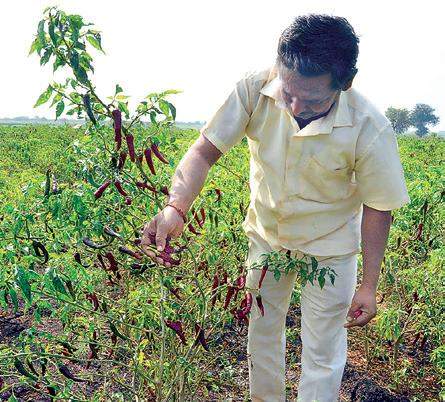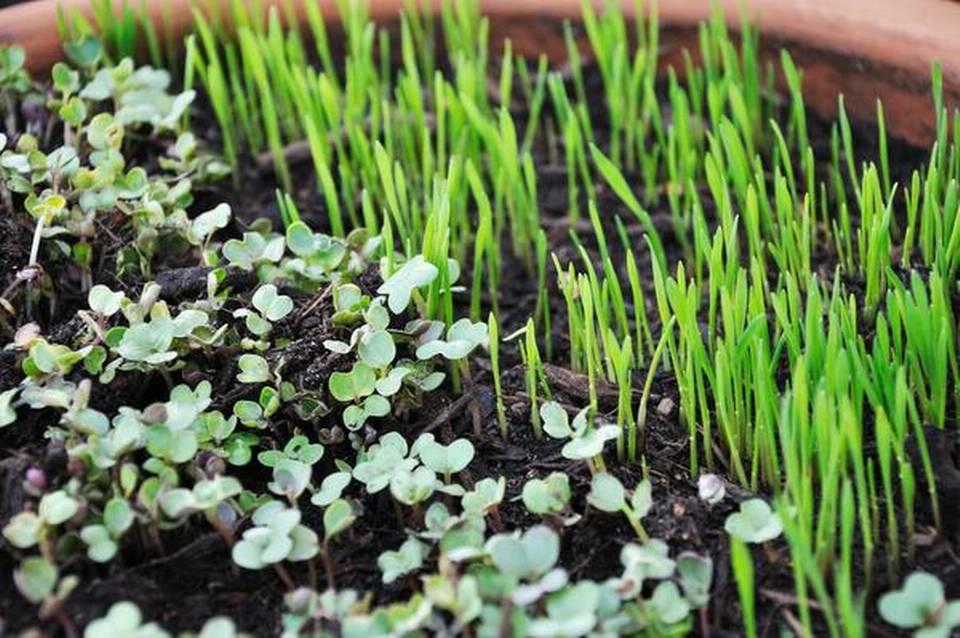Sunlight filters through the forest. Cool and fresh air invigorates you. Staying far from the madding crowd and surrounded by nature, your happiness quotient could be high.

Chamarajanagar :
Sunlight filters through the forest. Cool and fresh air invigorates you. Staying far from the madding crowd and surrounded by nature, your happiness quotient could be high. But living on the edge of a forest is not so easy. And when one lives close to a tiger reserve, one has to look for solutions which are sustainable in such a fragile surrounding. For Karthik Davey, the wilds of Bandipur became his home after a decade-long stay in Germany. On his five-acre farmland in Kaniyanapura village of Chamarajnagar district, he has given a new meaning to the best usage of degraded lands and management of scarce resources.
Everybody wants to come to forests, but where is the system to manage the waste or the sewage that is generated in these pristine surroundings, he asks. During weekends, people come in hordes while there is no system for sewage disposal, garbage segregation or collection of waste. Realizing the shortcomings, Davey has shown how to maintain, harvest and recycle available resources in the dry deciduous surroundings where there is scarcity of every resource.

Davey has converted degraded lands using organic solutions while at the same time he is recycling used water for nondrinking purposes. Be it conversion of sewage water, tapping wind and solar energy for lighting and other purposes, he says they are suitable for rural areas which have no access to water or power supply or have any system for sewage disposal. Further, the waste that is generated in the kitchen is bio-digested. During the monsoon months, rainwater is harvested by installing small check ponds. Says Rahul Agarwal, cofounder, Earthcare, “Davey has undertaken several steps to ensure that nature doesn’t only survive but also thrives by creating several redundant systems.
By creating various ponds and greywater recycling pits, he has made a much-needed water positive impact in an eco-sensitive zone. He has also created a mini forest with tall trees and other bushes and plants where just outside his property you can see the forest land is degraded and no one to care for it.” Davey is a self-made person. He lost his arm in a car accident 21 years ago. He was working for a travel company in Chennai but had to leave it and found succour in Frankfurt where he set up his own company in the hospitality sector. However, returning to India – he settled down in the wilds of Bandipur – taking up organic farming and setting up a homestay – very close to nature.
He is married to a German who partners him in his business activities. Relaxing in the cool backdrop of the Nilgiri Mountains, Davey describes his 12-year-long journey in converting his land into a sustainable and workable solution where people come and stay with him and get a feel of the wilderness and their proximity to nature. Even as his pets – the dholes roam around him affectionately for any tidbits — he says, “My idea was to work from any place but which was wild and had openness. After returning to India, I was looking for a place to settle down and kept coming back to Bandipur – attracted by dholes. Falling in love with its natural beauty, I purchased land here and it took me over two years of thought process to convert this piece of land into a place with least carbon footprint.”
The concept of decentralization has been used for power, water and sewage disposal for each of the rooms in his homestay. His ideas included solar panels about 20 metres, installation of septic tanks, separate lines for hot water, natural aeration with high ceilings, rainwater harvesting and of course, an old method for sewage treatment – the Reed Bed System which goes back in time. Reed beds are aquatic plant-based systems which allow bacteria, fungi and algae to digest the sewage and clean the water. He says, “We live in a world with finite resources and therefore, every resource is precious and has to be managed with great care especially groundwater which is available here only at 600 feet. My living here has been challenging. I take people along while villagers who work for me are part of this sustainable system and do their bit to take it forward.” “We ensure that we leave nothing behind on nature’s trail except a big eco-friendly carbon free footprint. We make sure the wilderness stays with us,” Davey says.
Dholes’ Den
Dholes’ Den, the unique homestay, set up with sustainable solutions, is an oasis that is dedicated to the Asiatic Wild Dog which Davey says is one of the most fascinating hunters in the Indian jungle with a complex and unique social hierarchy. And he says, “It is our endeavour to emphasize the importance and the beauty of this animal which wrongly stands in the shadow of bigger animals like the tiger, leopard or elephant and win support for the conservation of the jungle in Bandipur with the dhole as its mascot.”
source: http://www.newindianexpress.com / The New Indian Express / Home> States> Karnataka / by Meera Bharadwaj / Express News Service / August 04th, 2019










